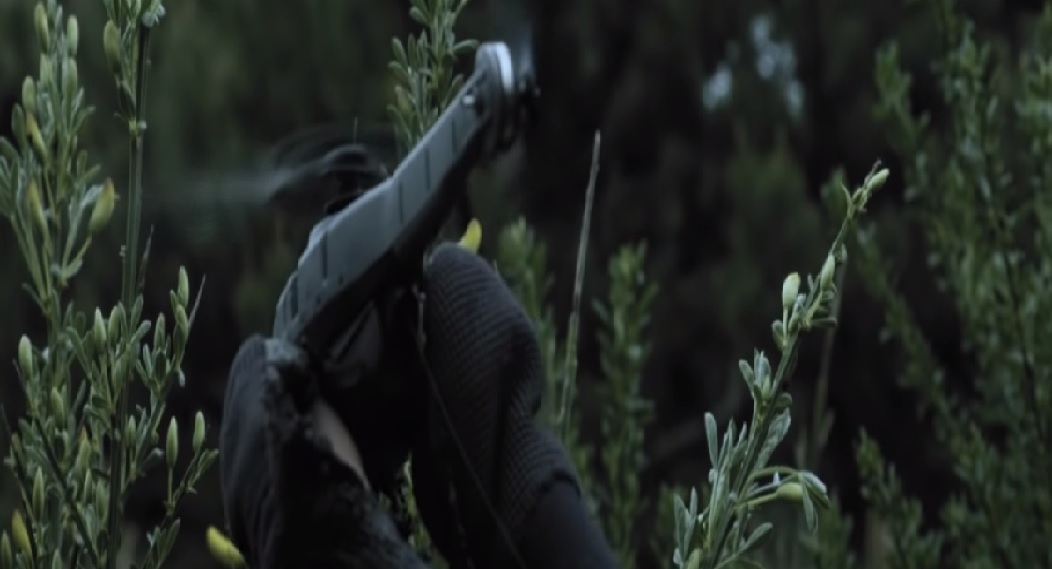This post is also available in:
 עברית (Hebrew)
עברית (Hebrew)
After over four years of experimentation, the US Army is beginning to send out the tiny Black Hornet nano-drones to operational units, a move which will change how the service conducts itself on the battlefield. The miniature unmanned helicopter will give a significant boost in situational awareness and allow them to scout ahead without having to automatically put soldiers at risk.
In January 2019, the Army revealed that the Soldier Sensors and Lasers (SSL) division of the Joint Manufacturing and Technology Center had delivered the first 60 complete Black Hornet systems to unspecified units. Then, FLIR Systems announced it had received a contract worth up to $39.6 million to deliver thousands more in the coming years. “The equipment is getting smaller and the reason it’s getting smaller is so the Soldier can be equipped with this,” Sunny Koshal, the chief of the Soldier Support Branch at Joint Manufacturing and Technology Center told thedrive.com.
The latest Black Hornet 3, which FLIR Systems also calls the Personal Reconnaissance System (PRS), comes with a docking station for two drones that keeps them protected when not in use, as well as a hand-held touchscreen device and a controller. All of this, along with a number of other more minor parts, as well as the user’s manual, comes inside a ruggedized container. Each Black Hornet has two daytime video cameras, as well as a thermal imager. All of these systems can capture still images for further analysis, too.
During nighttime operations, the drone fuses the feeds from both its electro-optical the thermal imaging system to create higher fidelity imagery. This makes it easier for the operator to positively identify individuals as hostile, rather than just innocent bystanders, or otherwise examine other objects of interest in the dark.
It can stay aloft for up to 25 minutes and has a maximum range of 2 km, allowing the operator to send it well ahead of their position to look for threats. Black Hornet has a line-of-sight link, as well as a GPS-enabled beyond-line-of-sight navigation capability. The operator can use the controller to pilot the unmanned helicopter manually, observing its activity through the cameras in its nose via the touchscreen display. The drone is also capable semi-autonomous operation, following preset waypoints, and can return to the user as programmed or on demand.
The Army, among others, is also preparing for the possibility that subterranean warfare, involving fighting through caverns and underground complexes of various types, could be another significant component of future warfighting. “The main purpose of this mission is to provide security, safety, and alertness to the Soldiers where the enemy is at all times,” Koshal, the branch chief at the Joint Manufacturing and Technology Center said. “Bottom line is it will keep the Soldier safe.”
Even just in day-to-day operations, Black Hornet will give Army soldiers an impressive boost in awareness about their surroundings, allowing them to make better-informed movements and out-maneuver opponents. It also offers a new way to reduce vulnerability to a host of threats, including ambushes, improvised explosive devices, or just what might be hiding on top of a roof or the other side of a wall. It could also help small units to more quickly and accurately assess the impact of artillery or air strikes and determine whether more fire support is needed and where.
It’s a relatively cost-effective way to upgrade the capability of small units, too, with a unit price per complete system of between $15,000 and $20,000, according to the Army’s budget request for the 2019 Fiscal Year.
Two years ago, the U.K. Armed Forces began using the very early versions of the Black Hornet in Afghanistan. The U.K. Ministry of Defense said that the system had been withdrawn from use sometime between 2016 and 2017 in favor of larger hand-launched drones, such as the Lockheed Martin Desert Hawk III, that offer significantly greater capability. As of 2016, the Black Hornet was reportedly in service or under evaluation in nearly 20 different countries.
Since then, U.S. special operations forces and the U.S. Marines have also evaluated the Black Hornet as part of similar efforts to improve the situational awareness of small units in the field. For special operations forces, which might be operating well away from friendly lines and larger conventional forces, having a good, real-time picture of their surroundings could be essential. It could also increase their ability to conduct special reconnaissance operations, potentially deep in denied areas, but allow for a greater standoff distance to the actual target, reducing the risk of the mission getting compromised.


























